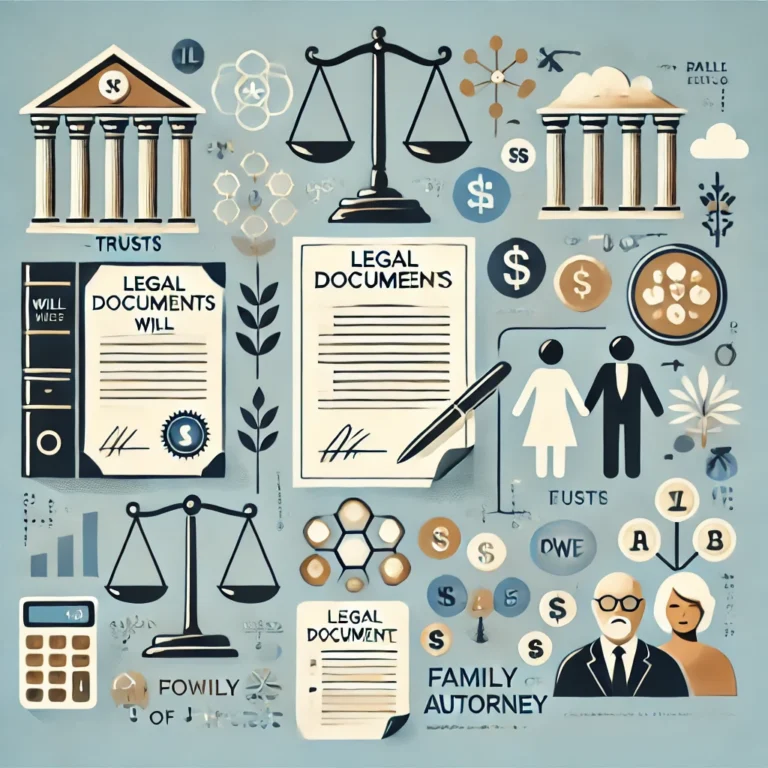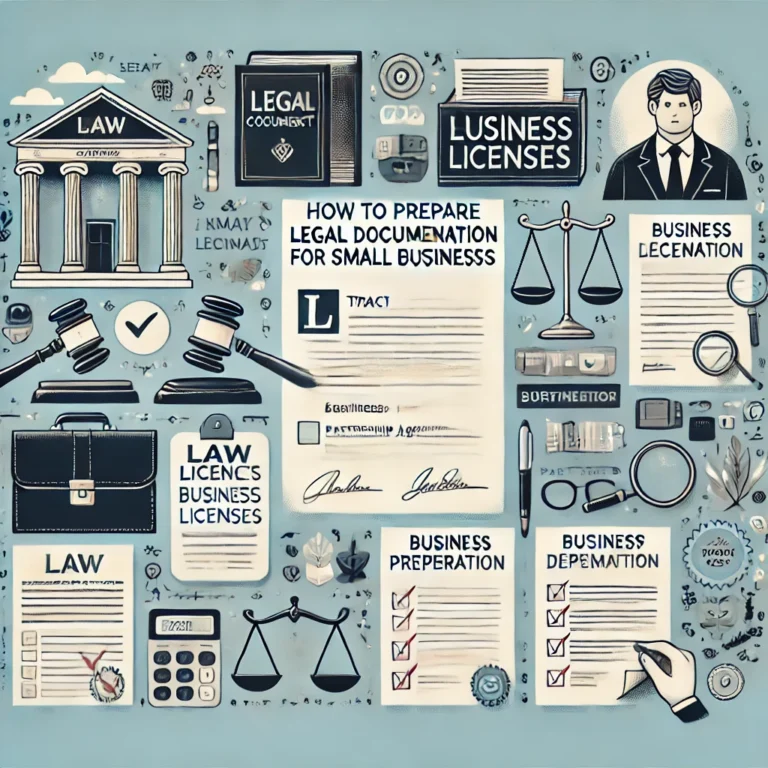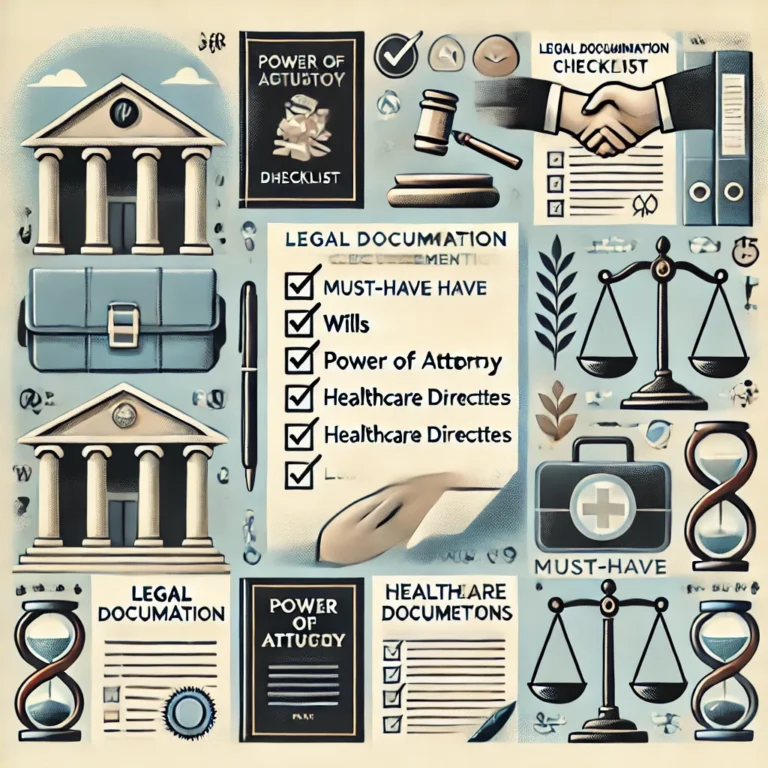How to Draft a Trust Deed: A Comprehensive Guide
Just because of drafting a trust deed which makes it look like walking through the maze of legal terms does not mean that you will experience this circumstance. With good guidance you can do this in a pleasant way. This lead will take you ‘through the approach’, rendering it more quickly to prepare a trust deed Than ever. Let’s dive in!
What is a Trust Deed?
Trust Deed A legal document that creates a trust. It specifies the rules of operation under which a trust will be run. You can think of a trust document as the masterplan for how your assets within the trust should be handled. It is important in that it keeps the trust running how you wanted.
Why Do You Need a Trust Deed?
The main positive of holding a trust deed. A trust places control (a trustee) of assets with a person or entity that is good at managing them; establishes who shall benefit from those assets (the beneficiaries); and defines how the funds are to be managed and distributed. This lack of trust deed may lead to conflict among the parties involved.
Elements of Trust Deed
It is crucial to know the components of a trust deed. Every one of these components is necessary for the trust to work as it should:
Trustor/Settlor
The Trustor, Also called Settlor – is the person who creates a trust. Here, they put their assets into the trust and dictate how these should be looked after.
Trustee
The trustee is the person or body who administer the trust in accordance with its established rules as detailed within a deed of trust. These are the people who have a moral and legal responsibility to act in the best interests of those receiving their care.
Beneficiaries
Trust beneficiaries are the people or entities that receive trust benefits. The trust deed is called a “trust” because it should make crystal clear who the beneficiaries are and what they get.
Trust Property
This encompasses everything that got put into the trust by the grantor. Whether it is cash, real estate, shares or personal property.
Terms and Conditions
These are the guidelines about how the trust is to be managed. It lays out who the assets go to, and how/when they are distributed.
How to Draft Trust Deed
Thus, let us treat the process of drafting a Trust Deed as step by step operation.
Part 1: Purpose of the Trust
Know before you start writing, why are you making the trust. Estate planning, asset protection or a loved one It will help you structure the rest of your writing.
II) Identify Trustor, Trustees and Beneficiaries
Define who the trustees will be For example, the trustor, trustee and beneficiaries. Be sure to obtain the consent of the proposed trustee as they will have significant duties.
Step 3: Inventory of Trust Property
Specify the assets which will be put into trust It is better to be more specific now than to later have confusion.
Step 4: Write the Terms and Conditions
Here’s how the trust will work. This will include how the assets are to be managed, what happens to income generated by the trust and when – if at all-assets can be distributed to beneficiaries.
Step 5: Speak to a Lawyer
Although the trust deed can be drafted on your own, it is recommended to seek legal advice so that you do not leave any compulsory provision of a legally valid Trust Deed.
Step Six: Put the Trust Deed into Ceremonial Use.
The trust deed is made and signed by the trustee,immediately in point of time ( contemporary to accomplishment) with signing done also (togather/imultaneously along with?)trustor. You may also be required to have witnesses or a notary, depending on your location.
Common Mistakes to Avoid
Do you know what traps to avoid when drafting a trust deed. Common Mistakes and How to Avoid Them
Vague Language
Make sure the Trust Deed uses clear and unambiguous language. Ambiguity in wording can result interpretation and legal conflicts.
Failing to consider tax consequences
Trusts and major tax consequences Tax : Talk to a tax advisor about how the trust will impact your taxes
Not Updating the Trust Deed
As life changes, so should your trust deed. Check it periodically and update your Will to reflect changes in circumstances or the law.
The Role of the Trustee
Importance of Trustee The trustee has a crucial part to play in the success of trust. What is a publicist and what do they do?
Fiduciary Duty
For one, the trustee has a duty to act in good faith and with loyalty towards beneficiaries while maintaining trust assets prudently.
Record Keeping
You must maintain accurate and complete records. The trustee has to maintain records in respect of all transactions connected with the trust.

Reporting
Ongoing reporting to the beneficiaries is necessary. Such fall within the scope of forwarding statements and annum reports to help Wealth Fund — Financial Statements_MINOR.
Types of Trust Deeds
TRUST DEEDS ARE NOT A ONE SIZE FIT ALL. Here are some common types.
Revocable Trust Deed
During your lifetime, this type of trust may be amended or revoked by you.isSuccessful filtering.
Irrevocable Trust Deed
This trust is alraedy built and revoking or changing the established one now. It provides asset protection and tax mitigation opportunities.
Living Trust Deed
Living trusts are created by the trustor while they’re alive and can be either revocable or irrevocable.
Testamentary Trust Deed
That trust, which is created by a will and does not spring into action until after the death of the person who set it up.
Benefits of a Trust Deed
Advantages of trust deed creation
Asset Protection
Agreements can be made in a will or trust to protect the assets from both creditors and lawsuits.
Estate Planning
Trusts are one of the most important mechanisms for controlling how your estate gets distributed.
Privacy
Trust deeds, unlike wills, do not become public record.
The challenges in writing a trust deed
The trust deeds are very advantageous in many ways, but Crating them requires a great affort.
Complexity
The Truth About Trust DeedsTrust deeds are simple in principle but can be complex legal documents if not kept to basic drafting principals.
Cost
You will have to pay for the trust deed, which can be quite costly if you seek professional legal help.
Maintenance
To ensure proper function, trusts will need to be continually managed and reviewed.
Conclusion
Writing a trust deed is difficult as it requires precision and everything should be planned initially. Once you comprehend your requirements and know how the process works, you can form a trust to fit them that shelter all of your properties. Always use a legal and/or financial professional to help ensure the deed of trust is both strong enough, warranting another borrower second.The output should
you are bolding everything
My apologies for that. Let me fix the formatting and only bold the headings, subheadings, and bullet points as requested.
Just because of drafting a trust deed which makes it look like walking through the maze of legal terms does not mean that you will experience this circumstance. With good guidance you can do this in a pleasant way. This lead will take you ‘through the approach’, rendering it more quickly to prepare a trust deed Than ever. Let’s dive in!
What is a Trust Deed?
Trust Deed A legal document that creates a trust. It specifies the rules of operation under which a trust will be run. You can think of a trust document as the masterplan for how your assets within the trust should be handled. It is important in that it keeps the trust running how you wanted.
Why Do You Need a Trust Deed?
The main positive of holding a trust deed. A trust places control (a trustee) of assets with a person or entity that is good at managing them; establishes who shall benefit from those assets (the beneficiaries); and defines how the funds are to be managed and distributed. This lack of trust deed may lead to conflict among the parties involved.
Elements of Trust Deed
It is crucial to know the components of a trust deed. Every one of these components is necessary for the trust to work as it should:
Trustor/Settlor
The Trustor, Also called Settlor – is the person who creates a trust. Here, they put their assets into the trust and dictate how these should be looked after.
Trustee
The trustee is the person or body who administer the trust in accordance with its established rules as detailed within a deed of trust. These are the people who have a moral and legal responsibility to act in the best interests of those receiving their care.
Beneficiaries
Trust beneficiaries are the people or entities that receive trust benefits. The trust deed is called a “trust” because it should make crystal clear who the beneficiaries are and what they get.
Trust Property
This encompasses everything that got put into the trust by the grantor. Whether it is cash, real estate, shares or personal property.
Terms and Conditions
These are the guidelines about how the trust is to be managed. It lays out who the assets go to, and how/when they are distributed.
How to Draft Trust Deed
Thus, let us treat the process of drafting a Trust Deed as step by step operation.
Part 1: Purpose of the Trust
Know before you start writing, why are you making the trust. Estate planning, asset protection or a loved one It will help you structure the rest of your writing.
II) Identify Trustor, Trustees and Beneficiaries
Define who the trustees will be For example, the trustor, trustee and beneficiaries. Be sure to obtain the consent of the proposed trustee as they will have significant duties.
Step 3: Inventory of Trust Property
Specify the assets which will be put into trust It is better to be more specific now than to later have confusion.
Step 4: Write the Terms and Conditions
Here’s how the trust will work. This will include how the assets are to be managed, what happens to income generated by the trust and when – if at all-assets can be distributed to beneficiaries.
Step 5: Speak to a Lawyer
Although the trust deed can be drafted on your own, it is recommended to seek legal advice so that you do not leave any compulsory provision of a legally valid Trust Deed.
Step Six: Put the Trust Deed into Ceremonial Use.
The trust deed is made and signed by the trustee,immediately in point of time ( contemporary to accomplishment) with signing done also (togather/imultaneously along with?)trustor. You may also be required to have witnesses or a notary, depending on your location.
Common Mistakes to Avoid
Do you know what traps to avoid when drafting a trust deed. Common Mistakes and How to Avoid Them
Vague Language
Make sure the Trust Deed uses clear and unambiguous language. Ambiguity in wording can result interpretation and legal conflicts.
Failing to consider tax consequences
Trusts and major tax consequences Tax : Talk to a tax advisor about how the trust will impact your taxes
Not Updating the Trust Deed
As life changes, so should your trust deed. Check it periodically and update your Will to reflect changes in circumstances or the law.
The Role of the Trustee
Importance of TrusteeThe trustee has a crucial part to play in the success of trust. What is a publicist and what do they do?
Fiduciary Duty
For one, the trustee has a duty to act in good faith and with loyalty towards beneficiaries while maintaining trust assets prudently.
Record Keeping
You must maintain accurate and complete records. The trustee has to maintain records in respect of all transactions connected with the trust.
Reporting
Ongoing reporting to the beneficiaries is necessary. Such fall within the scope of forwarding statements and annum reports to help Wealth Fund — Financial Statements_MINOR.
Types of Trust Deeds
TRUST DEEDS ARE NOT A ONE SIZE FIT ALL. Here are some common types.
Revocable Trust Deed
During your lifetime, this type of trust may be amended or revoked by you.isSuccessful filtering.
Irrevocable Trust Deed
This trust is alraedy built and revoking or changing the established one now. It provides asset protection and tax mitigation opportunities.
Living Trust Deed
Living trusts are created by the trustor while they’re alive and can be either revocable or irrevocable.
Testamentary Trust Deed
That trust, which is created by a will and does not spring into action until after the death of the person who set it up.
Benefits of a Trust Deed
Advantages of trust deed creation
Asset Protection
Agreements can be made in a will or trust to protect the assets from both creditors and lawsuits.
Estate Planning
Trusts are one of the most important mechanisms for controlling how your estate gets distributed.
Privacy
Trust deeds, unlike wills, do not become public record.
The challenges in writing a trust deed
The trust deeds are very advantageous in many ways, but Crating them requires a great affort.
Complexity
The Truth About Trust DeedsTrust deeds are simple in principle but can be complex legal documents if not kept to basic drafting principals.
Cost
You will have to pay for the trust deed, which can be quite costly if you seek professional legal help.
Maintenance
To ensure proper function, trusts will need to be continually managed and reviewed.
Conclusion
Writing a trust deed is difficult as it requires precision and everything should be planned initially. Once you comprehend your requirements and know how the process works, you can form a trust to fit them that shelter all of your properties. Always use a legal and/or financial professional to help ensure the deed of trust is both strong enough, warranting another borrower second.The output should read JIM ROMANIf you are involved with commercial real
FAQs
Trust deed Vs Will ( how is a trust made using Trust Deed?)
A trust deed, being a legal document that creates a trust; a will is meant to approve the way an individual’s properties distributed after death. Trust deeds are confidential, and can be more flexible than wills.
Is it possible to modify a trust deed?
You can revise the provisions of your trust if you have a revocable one. Irrevocable trusts, on the other hand do not allow changes except with agreement by all parties.
When I also need an attorney to draw the TRUST DEED?
While you can create a trust deed on your own(again must check with an attorney to make sure it is legally sound and complete), consulting with a lawyer ensures the document covers everything.
Well – what happens if the trustee dies or becomes unable to serve?
These provisions allow the declaration of trust to name a successor trustee if there is death or incapacity for any reason.
When should I get my trust deed reviewed?
Your trust deed should be reviewed every few years and in the event of a significant change to your personal circumstances — such as marriage, divorce, becoming parents or experiencing substantial financial changes.






